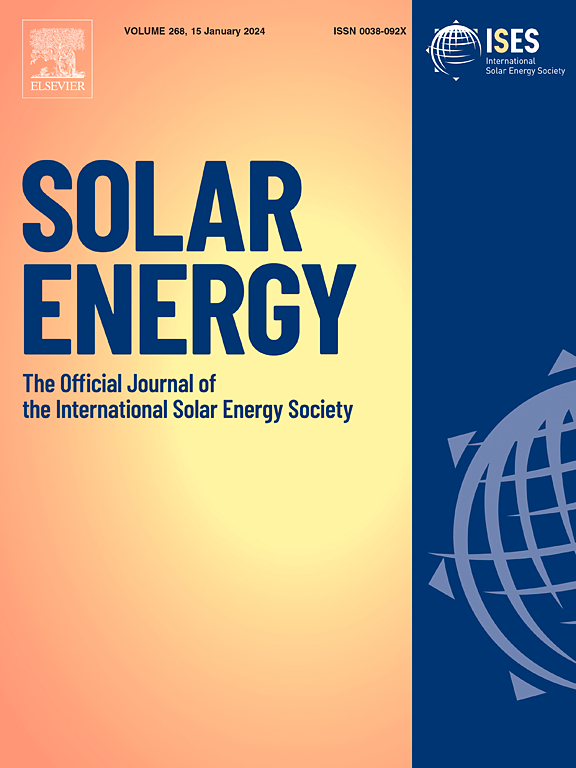Next-gen solar: revealing the promise of CsPbI3/CsSnI3 tandem cells
IF 6
2区 工程技术
Q2 ENERGY & FUELS
引用次数: 0
Abstract
Tandem solar cells offer a wider photon absorption range, enabling greater efficiency compared to single junction counterparts. The upper cell efficiently captures high-, while the lower filtered through the top layer. Achieving efficient, cost-effective, and durable solar cells requires the integration of absorber layers with optimal band gaps. This study presents a computational exploration of tandem to improve device performance. The proposed dual-layer configuration features a top cell composed of ITO/ZnSe/CsPbI3 and a bottom cell of ITO/ZnSe/CsSnI3. The thickness of the perovskite CsPbI3 layer in the top cell was optimized for peak performance, maximizing light absorption and enhancing charge carrier dynamics. Emission spectra from the first cell were utilized to guide the SCAPS-1D simulations for the second cell. The results reveal a notable and an impressive of 29.38%, underscoring the superiority of this tandem configuration over single-junction designs. These findings demonstrate the potential of tandem perovskite solar cells to drive next-generation photovoltaic technologies, fostering advancements in .
下一代太阳能:揭示CsPbI3/CsSnI3串联电池的前景
串联太阳能电池提供更宽的光子吸收范围,与单结太阳能电池相比,具有更高的效率。上层细胞有效地捕获高能量光子,而下层细胞吸收低能量光子通过顶层过滤。实现高效、经济、耐用的太阳能电池需要集成具有最佳带隙的吸收层。本研究提出了串联钙钛矿太阳能电池使用scaps - 1dsimulation来提高器件性能的计算探索。所提出的双层结构的特点是,顶部电池由ITO/ZnSe/CsPbI3组成,底部电池由ITO/ZnSe/CsSnI3组成。顶部电池中钙钛矿CsPbI3层的厚度优化了峰值性能,最大化了光吸收并增强了载流子动力学。利用第一个电池的发射光谱来指导第二个电池的SCAPS-1D模拟。结果显示了显著的填充系数(FF)和令人印象深刻的29.38%的功率转换效率(PCE),强调了这种串联结构相对于单结设计的优越性。这些发现证明了串联钙钛矿太阳能电池在推动下一代光伏技术方面的潜力,促进了高效、经济的太阳能解决方案的发展。
本文章由计算机程序翻译,如有差异,请以英文原文为准。
求助全文
约1分钟内获得全文
求助全文
来源期刊

Solar Energy
工程技术-能源与燃料
CiteScore
13.90
自引率
9.00%
发文量
0
审稿时长
47 days
期刊介绍:
Solar Energy welcomes manuscripts presenting information not previously published in journals on any aspect of solar energy research, development, application, measurement or policy. The term "solar energy" in this context includes the indirect uses such as wind energy and biomass
 求助内容:
求助内容: 应助结果提醒方式:
应助结果提醒方式:


